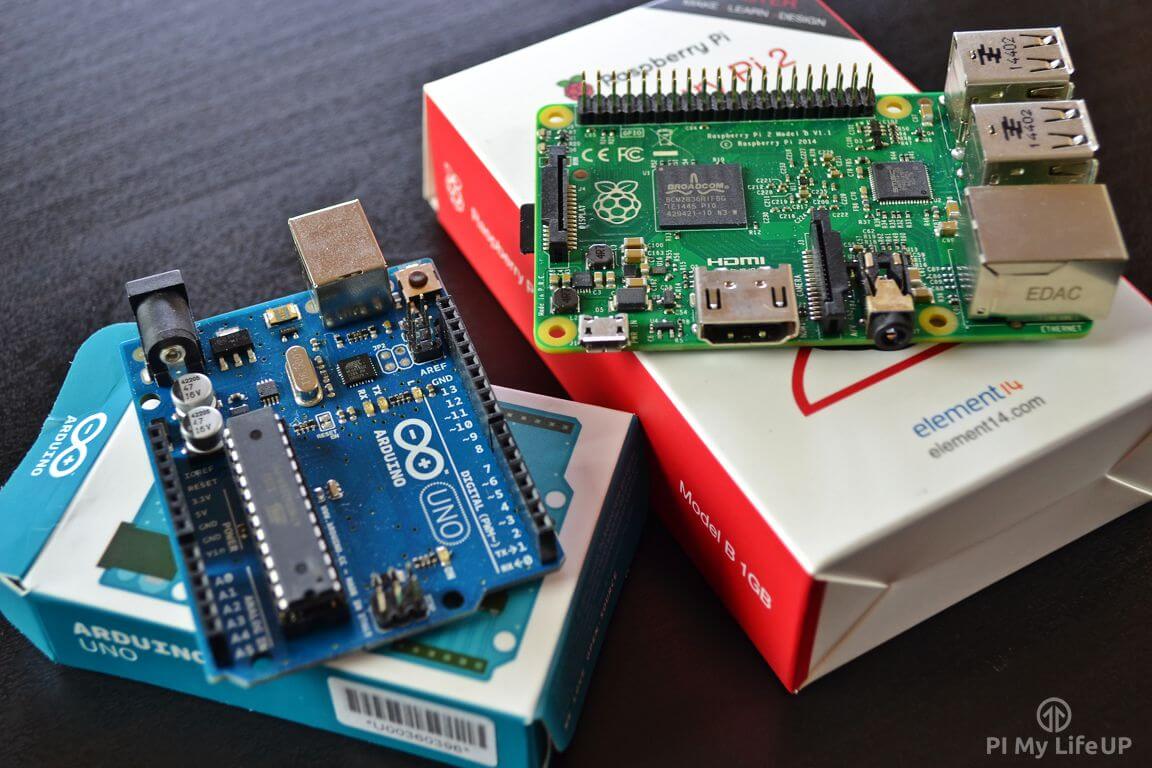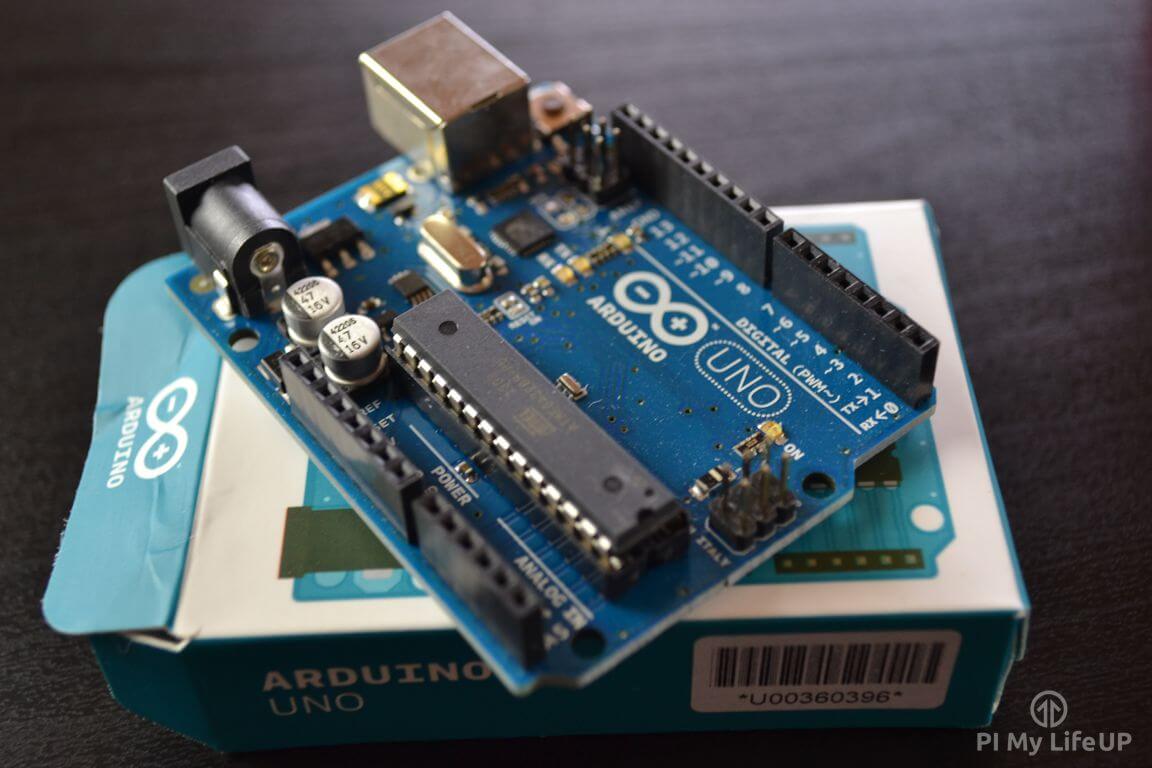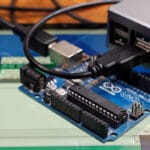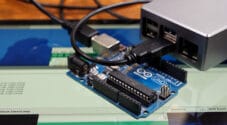In this guide, we’re taking a look at the Raspberry Pi vs. Arduino Uno. It is often an assumption that these two devices are very similar, but the truth is that actually, they’re very different.

The two devices both have pros and cons that I will now go into in this guide. Hopefully, after this guide, you will be able to decide which board is better for what you plan on doing or learning.
It’s important to know that we’re only taking a look at one Arduino product in this comparison. There are plenty more Arduino products that are well worth checking out.
Video
If you don’t feel like reading, then check out the video below to hear me discuss the differences between the Raspberry Pi vs. Arduino Uno.
If you do like the video, then please make sure you subscribe or follow us on social media so you can stay up to date with all the latest Pi projects, guides and much more.
Brief Overview
We’re just going to quickly take a look at both the Arduino and the Raspberry Pi. We will mention the main features and differences between the two.
The Arduino Uno

For those who don’t know the Arduino is a microcontroller board that allows you to run small programs. A microcontroller, unlike the Raspberry Pi, doesn’t run a full operating system (OS). This missing OS removes a lot of functionality that you gain from having an OS but allows interacting with sensors and devices and executing code to be a lot faster and easier.
Every time you want to update the code on the Arduino, you will need to connect it up to a PC via a USB cord.
You will also find that the Arduino doesn’t have a video out, audio out, networking, USB and onboard storage. This missing functionality can be introduced by using add-on boards that we will mention below.
You can buy Arduino shields to increase the functionality of the board. These shields range from GPS (Global Positioning System) units, networking, motor control and much more.
The Raspberry Pi

A Raspberry Pi unlike the Arduino is a mini computer and requires an operating system to run. The Pi has a processor, RAM, HDMI out, onboard and everything you will find on a regular computer. Since you have to run an operating system interacting with hardware and executing programs is likely to be a bit more complicated and slower.
The Raspberry Pi supports networking straight out of the box. This network functionality means once you get past the initial setup you can access your Pi remotely using SSH or other methods.
It also has plenty of USB ports, an HDMI port, audio out so you can hook up quite a few addition peripherals. The Pi also comes with GPIO pins that allow you to interact with devices in a variety of ways and add additional functionality to the Pi.
If you want to learn more about the Pi, you should check out my what is a Raspberry Pi guide.
Projects you can do
An important factor to consider in the Raspberry Pi vs Arduino debate is the projects you’re able to with the board. If you already have a project in mind, then it is very important to know the capabilities of each board and what you can get out of it.
The projects you can do with the Raspberry Pi range from just installing software right through to projects that involve software and circuitry.
To name a few good Raspberry Pi projects examples:
- Retro game emulator
- Web Server
- Robots
- Home automation
- and much more!
The projects you will find yourself doing with the Arduino are going to mainly involve circuitry based projects however you can still do some cool software project such as a mobile phone and much more.
To name a few good Arduino projects:
- Quadcopters
- Robots
- Mobile Phone
- Clock
- Bean counter
- And much more!
As you can probably see from the above examples, the boards can do similar projects however the Raspberry Pi can do a lot more software projects such as the web server and so on.
Time to master
The Raspberry Pi takes a bit more time to learn because there are many added complexities. This extra stuff to learn includes things such as the Linux based operating system, massive range of libraries, support for many programming languages and much more. That being said you can quickly learn to install software and get some neat projects up and going in time at all.
The Arduino, on the other hand, is simple as you can do most things with just the basic programming language. Also, it can handle communication with hardware a lot better than the Raspberry Pi as it doesn’t have all the extra burden the Pi has.
Regarding time to master you will find learning how to operate, deploy code on the Arduino a lot easier than on the Raspberry Pi. It is very important to remember what you plan on doing as one is better at electronic projects, and the other is better at software.
The Raspberry Pi vs. Arduino Summary
In summary, the Arduino is more suited for projects that require interaction with devices and sensors. It’s a great way to learn the basics of programming and interacting with devices, sensors and other real-world objects.
The Raspberry Pi, on the other hand, is better suited for projects that require more RAM and processing power. It is excellent for running heavy software projects such as a media center, web server, act as a desktop computer and much more. It too can interact with devices but not as well as the Arduino can.
You can combine the two boards and build awesome complex projects that both have a cool software package backed up with interaction with sensors and devices.
I hope this guide on the Raspberry Pi vs. Arduino has helped clear things up about these two devices. If you want to add to the article, leave feedback, then please feel free to drop us a comment below.









Great Article I must say. Btw I love Arduino more than Raspberry Pi. So, if you ask me then I would prefer Arduino YUN over Raspberry Pi, if I have to work on Cloud computing.
There are many versions from the Arduino Mega which is bigger than the PI but offers 54 input/output pins (just 17 on the Pi) though to the nano and micro boards which measure around 30mmx15mm. There are versions like the Leonardo which feature built in USB HOST connectivity so its easy to emulate a keyboard or any other usb device for that matter.
Also the arduino starts up pretty much instantly, whereas on a Pi you must wait for the OS to load before your code can start.
The Arduino also doesn’t require a memory card to operate as all versions include sufficient flash memory onboard, All of which make projects cheaper to produce.
The Pi does win when more advanced processing is required eg time lapse photography and converting the pics to a video, or KODI etc, but for most controller circuits for example remote control for your garage doors, electronic thermostat, Christmas lights RGB flasher, a three servo Panoramic photo rig or a camera auto timer, etc etc ( all projects I have built!) the Arduino is the perfect choice.
I would like to add that the Pi can do anything the Arduino can, but the Arduino cannot do everything the Pi can. You can not emulate the HDMI, 4 USB, or WiFi ports on the Arduino, at least not without substantial additional cost, and never video. But the Pi can emulate hardware interrupts and analog-digital I/O in software. Without all the software overhead, the Arduino is faster. With all that software overhead, the Pi is versatile but slower. You either need an “embedded controller” or a “full-function computer”. Like the difference between real time and batch processing. Neither is best for all tasks, yet both are very good doing what they do best.
Thats wrong… Raspberry pi doesnt have any analog input and lack pwm fonctionnality… Also, raspberry pi is not realtime, it cannot drive correctly some leds for example…
Very informative. Your article helped me to make the right choice. Thanks!
Nice to read. Most of the things mentioned i already know but combining the two was interesting to read and got me thinking 🙂